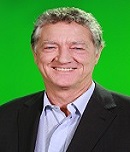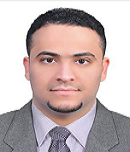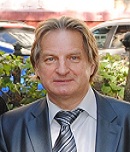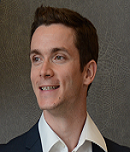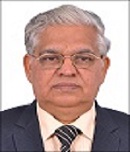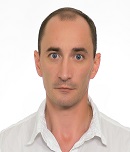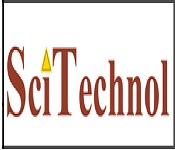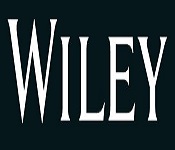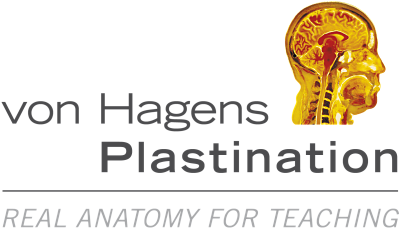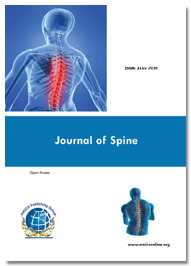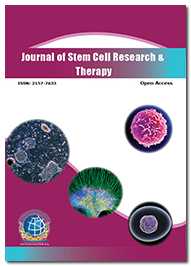Theme: Advancement in the teaching and research in the field of Human Anatomy and Physiology
Anatomy and Physiology 2016
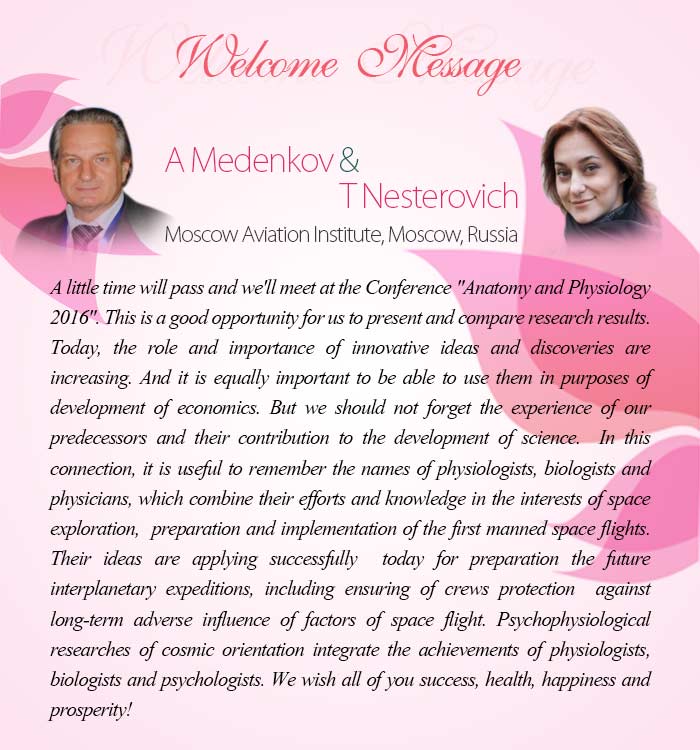
ConferenceSeries Ltd. invites all the participants across the globe to attend International Conference on Anatomy & Physiology during August 11-13, 2016 at Birmingham, UK which includes prompt keynote presentations, Oral talks, Poster presentations, Exhibitions and much more.
Anatomy and Physiology 2016 Conference will bring together world-class scientists, biologists, super specialist, researchers and academicians to discuss about anatomy & physiology. This conference will be covering essential topics like organ science and homeostasis, human anatomy and ergonomics, latest innovations in embryology research, experimental physiology and pathophysiology, human consciousness, exercise physiology and physiotherapy, human immunity and physiology, various biological systems, histology and cytology, biomechanics and biomedical implants, physiological psychology, physiology of respiratory system, eye, ear, nose and much more.
Anatomy is the scientific study of the structure of organisms including their systems, organs and tissues. Ergonomics is the scientific discipline concerned with the understanding of interactions among humans and other elements of a system, and the profession that applies theory, principles, data and methods to design in order to optimize human well-being and overall system performance.
Related Conferences: International Conference on Anesthesia and Intensive Care Treatment September 12-14, 2016 Phoenix, Arizona, USA ;International Conference and Expo on Biomechanics and Implant Design July 27-29, 2015 Florida, USA ;International Conference on Medical Devices September 21-22, 2015 Orlando, USA;4th International Conference and Exhibition on Surgery October 05-07, 2015 Crowne Plaza, Dubai, UAE; International Conference and Exhibition on Medical-Surgical Nursing October 13-15, 2016 Kuala Lumpur, Malaysia ;7th Conference on Applied Human Factors and Ergonomics, July 27-31,2016 , FL, USA;19th Annual Applied Ergonomics Conference, March 21-24,2016, Orlando, FL; 13th Indian Society Of Ergonomics Convention, 6 - 9 December, 2015, Mumbai, India;
Cytology is a branch of Life Science that deals with the structure, functioning and the Chemistry of ‘Cell’, a basic unit of the living organism. Histology is the study of microscopic anatomy of cells and tissues of living organism.
Related Conferences: 2nd International Conference on Cytopathology August 11-12, 2016 Birmingham,UK ; International Conference and Exhibition on Cytology & Histology August 01-03, 2016 Manchester, UK; International Conference on Internal Medicine November 03-05, 2016 Baltimore, Maryland, USA; 2nd International Conference and Exhibition on Molecular Medicine and Diagnostics September 26-28, 2016 Miami, USA; Wound Healing 2016,26–28 January 2016,United Kingdom
The human skeleton is the internal framework of the body. It is composed of 270 bones at birth – this total decreases to 206 bones by adulthood after some bones have fused together. The bone mass in the skeleton reaches maximum density around age 30. The human skeleton can be divided into the axial skeleton and the appendicular skeleton. The axial skeleton is formed by the vertebral column, the rib cage, the skull and other associated bones. The appendicular skeleton, which is attached to the axial skeleton, is formed by the pectoral girdle, the pelvic girdle and the bones of the upper and lower limbs. The human skeleton serves six major functions; support, movement, protection, production of blood cells, storage of ions and endocrine regulation.
The human musculoskeletal system (also known as the locomotor system, and previously the activity system) is an organ system that gives humans the ability to move using their muscular and skeletal systems. The musculoskeletal system provides form, support, stability, and movement to the body. It is made up of the bones of the skeleton, muscles, cartilage, tendons, ligaments, joints and other connective tissue that supports and binds tissues and organs together. The musculoskeletal system's primary functions include supporting the body, allowing motion, and protecting vital organs. The skeletal portion of the system serves as the main storage system for calcium and phosphorus and contains critical components of the hematopoietic system.
Organ science and Hematologic system
Homeostasis is the process by which the body regulates its internal environment for chemical and biological processes to occur. Some of the more important variables that need to be controlled include temperature, and the levels of blood sugar, oxygen and carbon dioxide. A number of organs are involved in homeostasis, and these include the lungs, pancreas, kidneys and skin.
Related Conferences: 4th International Conference on Blood Malignancies and Treatment April 18-20, 2016 Dubai,UAE ; International Conference on Leukemia and Bone marrow Transplantation November 10-12, 2016 Istanbul, Turkey ;3rd International Conference on Hematology & Blood Disorders November 02-04, 2015 Atlanta, USA; 5th World Congress on Cell & Stem Cell Research March 23-25, 2015 Chicago, Illinois, USA; 2nd International Conference on Antimicrobial Agents and Chemotherapy June 06-07, 2016 Dallas, USA ; Biology of Down Syndrome: Impacts Across the Biomedical Spectrum,10–14 January 2016,United States; Traumatic Brain Injury: Clinical, Pathological and Translational Mechanisms,24–27 January 2016,United States; Wound Healing 2016,26–28 January 2016,United Kingdom
Dental: Anatomy and Physiology
The major structures that are found in and around the oral cavity include the lips, cheeks, tongue, hard palate, soft palate, teeth, gums, salivary glands and the upper and lower jaws. Maintaining the teeth in a state of health is of utmost importance for complete digestion and nutrition. Not only do the teeth serve several functions in the chewing process, but they also affect our speech and appearance. This conference is looking forward to discuss innovative exploration in dental anatomy and physiology.
Anatomy and Physiology of Heart and Lungs
The Respiratory System is crucial to every being. Without it, we would cease to live outside of the womb. Let us begin by taking a look at the structure of the respiratory system and how vital it is to life. During inhalation or exhalation air is pulled towards or away from the lungs, by several cavities, tubes, and openings. The organs of the respiratory system make sure that oxygen enters our bodies and carbon dioxide leaves our bodies. The respiratory tract is the path of air from the nose to the lungs. It is divided into two sections: Upper Respiratory Tract and the Lower Respiratory Tract. Included in the upper respiratory tract are the Nostrils, Nasal Cavities, Pharynx, Epiglottis, and the Larynx. The lower respiratory tract consists of the Trachea, Bronchi, Bronchioles, and the Lungs.
The circulatory system, also called the cardiovascular system or the vascular system, is an organ system that permits blood to circulate and transport nutrients (such as amino acids and electrolytes), oxygen, carbon dioxide, hormones, and blood cells to and from the cells in the body to provide nourishment and help in fighting diseases, stabilize temperature and pH, and maintain homeostasis. The study of the blood flow is called hemodynamic. The study of the properties of the blood flow is called hemorheology.
Related Conferences: 2nd International Conference on Respiratory and Pulmonary Medicine May 09-10, 2016 Chicago, USA ;4th International Conference and Exhibition on Lung & Respiratory Care August 01-03, 2016 Manchester, UK ;5th Global Respiratory and Pulmonologist Annual Meeting November 17-18, 2016 Dubai, UAE; 14th MCI Symposium/Early AD Dx & Tx Workshop,16–17 January 2016,United States; ; Traumatic Brain Injury: Clinical, Pathological and Translational Mechanisms,24–27 January 2016,United States; Axons: From Cell Biology to Pathology,24–27 January 2016,United States;
The immune system is a complex system that is responsible for protecting us against infections and foreign substances. There are three lines of defence: the first is to keep invaders out, the second line of defence consists of non-specific ways to defend against pathogens that have broken through the first line of defence. The third line of defence is mounted against specific pathogens that are causing disease. The immune system is closely tied to the lymphatic system, with B and T lymphocytes being found primarily within lymph nodes. Tonsils and the thymus gland are also considered lymph organs and are involved in immunity. We often don't realize how effective the immune system is until it fails or malfunctions, such as when the lymphocytes are attacked by HIV in an AIDS patient.
Related Conferences: 3rd World Congress on Pharmacology August 08-10, 2016 Birmingham, UK ; International conference on Adolescent Medicine & Child Psychology September 28-30, 2015 Houston, USA;2nd International Conference on Psychiatry and Psychiatric Disorders May 02-04, 2016 Chicago, USA; International Conference on Cognitive Behavioral Therapy June 13-15, 2016 Philadelphia, USA; International Conference on Positive Psychology July 11-12, 2016 Philadelphia, USA;
Latest innovations in embryology pregnancy research
Embryology is the study of the development of an embryo. An embryo is defined as any organism in an early stage well before birth.
Related Conferences: Polycystic Ovarian Syndrome Conference November 16-18, 2015 Seattle, USA;2nd International Conference on Gynecology & Obstetrics November 16-18, 2015 San Antonio, USA; Pregnancy Summit & Child Health August 29-31, 2016 Sao Paulo, Brazil; International Conference on Digital Human Modeling and Applications in Health, Safety, Ergonomics and Risk Management,17–22 July 2016,Canada; Pediatrics 2040: Emerging Trends and Innovations for the Next 25 Years, 6–9 January 2016 United States; 6th International Neonatology Conference 11–12 March 2016,United Arab Emirates;
Physiological Psychology & Neuro-biology
Physiological psychology is a subdivision of behavioural neuroscience that studies the neural mechanisms of perception and behaviour through direct manipulation of the brains. This field of psychology takes an empirical and practical approach when studying the brain and behaviour. Most scientists in this field believe that the mind is a phenomenon that stems from the nervous system. By studying and gaining knowledge about the mechanisms of the nervous system, physiological psychologists can uncover many truths about behaviour. Unlike other subdivisions within biological psychology, the main focus of physiological psychological research is the development of theories that describe brain-behaviour relationships.
Related Conferences: International conference on Adolescent Medicine & Child Psychology September 28-30, 2015 Houston, USA;2nd International Conference on Psychiatry and Psychiatric Disorders May 02-04, 2016 Chicago, USA; International Conference on Cognitive Behavioral Therapy June 13-15, 2016 Philadelphia, USA; International Conference on Positive Psychology July 11-12, 2016 Philadelphia, USA;2nd International conference on Emergency Mental Health & Human Resilience July 14-15, 2016 Cologne, Germany ; 14th MCI Symposium/Early AD Dx & Tx Workshop,16–17 January 2016,United States; ; Traumatic Brain Injury: Clinical, Pathological and Translational Mechanisms,24–27 January 2016,United States; Axons: From Cell Biology to Pathology,24–27 January 2016,United States ; Wound Healing 2016,26–28 January 2016,United Kingdom; Neurological Disorders of Intracellular Trafficking,31 January – 4 February 2016,United States;
Exercise Physiology and Physiotherapy
Exercise Physiology is the new and growing area of allied health whereas physiotherapy is a long established profession. At some point in our lives the majority of us have seen a physiotherapist for treatment, more than likely lower back pain.
So how do an Exercise Physiologist and Physiotherapist differ!!!
Related Conferences: International Conference on Myositis May 02-03, 2016 Chicago, USA ;4th International Conference and Exhibition on Physical Medicine & Rehabilitation August 25-27, 2016 Philadelphia,USA;2nd International Conference and Expo on Novel Physiotherapies June 9-11, 2016 London, UK; 3rd International Conference and Exhibition on Pharmaceutics & Novel Drug Delivery Systems April 08-10, 2013 Hilton Chicago/Northbrook, USA 2016 Obesity Summit,12–14 April 2016, United Kingdom; International Conference on Digital Human Modeling and Applications in Health, Safety, Ergonomics and Risk Management,17–22 July 2016,Canada; Biology of Down Syndrome: Impacts Across the Biomedical Spectrum,10–14 January 2016,United States; American Society for Peripheral Nerve Annual Meeting,15–17 January 2016,United States;14th MCI Symposium/Early AD Dx & Tx
Energy Systems & Sports Physiology
Energy is required for all kinds of bodily processes including growth and development, repair, the transport of various substances between cells and of course, muscle contraction. Several energy sources or substrates are available which can be used to power the production of ATP. One of these substrates, like existing ATP, is stored inside the cell and is called creatine phosphate.
This conference will focus on understanding energy systems underpins the study of exercise and the effect it has on the human body.
Related Conferences: International Conference on Myositis May 02-03, 2016 Chicago, USA ;4th International Conference and Exhibition on Physical Medicine & Rehabilitation August 25-27, 2016 Philadelphia,USA;2nd International Conference and Expo on Novel Physiotherapies June 9-11, 2016 London, UK; 3rd International Conference and Exhibition on Pharmaceutics & Novel Drug Delivery Systems April 08-10, 2013 Hilton Chicago/Northbrook, USA 2016 Obesity Summit,12–14 April 2016, United Kingdom; International Conference on Digital Human Modeling and Applications in Health, Safety, Ergonomics and Risk Management,17–22 July 2016,Canada; Biology of Down Syndrome: Impacts Across the Biomedical Spectrum,10–14 January 2016,United States; American Society for Peripheral Nerve Annual Meeting,15–17 January 2016,United States;14th MCI Symposium/Early AD Dx & Tx
The integumentary system is the organ system that protects the body from various kinds of damage, such as loss of water or abrasion from outside. The system comprises the skin and its appendages (including hair, scales, feathers, hooves, and nails). The integumentary system has a variety of functions; it may serve to waterproof, cushion, and protect the deeper tissues, excrete wastes, and regulate temperature, and is the attachment site for sensory receptors to detect pain, sensation, pressure, and temperature. In most terrestrial vertebrates with significant exposure to sunlight, the integumentary system also provides for vitamin D synthesis.
Anatomy and Physiology of other various Biological systems
A biological system is a complex network of biologically relevant entities. As biological organization spans several scales, examples of biological systems are populations of organisms, or on the organ- and tissue scale in human, the circulatory system, the respiratory system, the nervous system, etc.
On the micro- to the nano scopic scale, examples of biological systems are cells, organelles, macromolecular complexes and regulatory pathways.
Related Conferences: International Conference on Myositis May 02-03, 2016 Chicago, USA ;4th International Conference and Exhibition on Physical Medicine & Rehabilitation August 25-27, 2016 Philadelphia,USA;2nd International Conference and Expo on Novel Physiotherapies June 9-11, 2016 London, UK; 3rd International Conference and Exhibition on Pharmaceutics & Novel Drug Delivery Systems April 08-10, 2013 Hilton Chicago/Northbrook, USA 2016 Obesity Summit,12–14 April 2016, United Kingdom; International Conference on Digital Human Modeling and Applications in Health, Safety, Ergonomics and Risk Management,17–22 July 2016,Canada; Biology of Down Syndrome: Impacts Across the Biomedical Spectrum,10–14 January 2016,United States; American Society for Peripheral Nerve Annual Meeting,15–17 January 2016,United States;14th MCI Symposium/Early AD Dx & Tx
Experimental Physiology and Pathophysiology
Pathophysiology or physiopathology is a convergence of pathology with physiology. Pathology is the medical discipline that describes conditions typically observed during a disease state, whereas physiology is the biological discipline that describes processes or mechanisms operating within an organism. Pathology describes the abnormal or undesired condition, whereupon pathophysiology seeks to explain the physiological processes or mechanisms whereby such condition develops and progresses.
Related Conferences: International Conference on Microbial Physiology and Genomics October 20-22, 2016 Rome, Italy ;2nd International Conference and Exhibition on Pharmacology and Ethnopharmacology May 02-04, 2016 Chicago, USA; International Conference on Anatomy and Physiology August 11-13, 2016 Birmingham, UK ;14th MCI Symposium/Early AD Dx & Tx Workshop,16–17 January 2016,United States; ; Traumatic Brain Injury: Clinical, Pathological and Translational Mechanisms,24–27 January 2016,United States; Axons: From Cell Biology to Pathology,24–27 January 2016,United States;
Anatomy and Physiology of Cancer
Cancer is the uncontrolled growth of abnormal cells in the body. In the body, there are trillions of cells with various functions. These cells grow and divide to help the body function properly. Cells die when they become old or damaged, and new cells replace them.
Cancer develops when the body’s normal control mechanism stops working. Old cells do not die and cells grow out of control, forming new, abnormal cells. These extra cells may form a mass of tissue, called a tumor. Some cancers, such as leukemia, do not form tumors.
Cancer has a complex Pathophysiology. Pathologists are physicians who are concerned primarily with the study of disease in all its aspects. This includes cause of the disease, diagnosis, how the disease develops (pathogenesis), mechanism and natural course of the disease. They also deal with biochemical features, progression, and prognosis or outcome of the disease.
Biomechanics and Biomedical implants
The Biomechanics & Implants program includes basic and applied research in the broad field of joints, soft tissues, bones and implants. An implant is a medical device manufactured to replace a missing biological structure, support a damaged biological structure, or enhance an existing biological structure. Medical implants are man-made devices, in contrast to a transplant, which is a transplanted biomedical tissue. The surface of implants that contact the body might be made of a biomedical material such as titanium, silicone or apatite depending on what is the most functional. In some cases implants contain electronics e.g. artificial pacemaker and cochlear implants. Some implants are bioactive, such as subcutaneous drug delivery devices in the form of implantable pills or drug-eluting stents.
Related Conferences: International Conference and Exhibition on Cosmetic Dermatology & Haircare, December 07-08, 2015 Philadelphia, USA; 7th Global Orthopedicians Annual Meeting October 20-22, 2016 Kuala Lumpur, Malaysia; International Conference on Vascular Medicine and Surgeons Meeting October 24-25, 2016 Chicago, USA;5th International Conference of Orthopedic Surgeons and Rheumatology March 31-April 01, 2016 Valencia, Spain; International Conference on Orthodontics and Dental Implants May 09-10, 2016 Sanfrancisco , USA; American Society for Peripheral Nerve Annual Meeting,15–17 January 2016,United States; 3rd Caribbean Biomedical Research Days CBRD-2016,16–18 January 2016,Saint Lucia;
It is the branch of anatomy to determine, examine and identifying preserved parts of the body remains to identify the cause of death, age, genetic population, sex etc. it is mostly used for solving the crime scenes. The human body incorporates the whole structure of a person and contains a head, neck, trunk (which incorporates the thorax and guts), arms and hands, legs and feet. All aspects of the body is made out of different sorts of cells, the basic unit of life.
Related Conferences: 2nd Global Summit and Expo on Multimedia and Applications, August 15-16, 2016 London, UK; 3rd International Conference and Business Expo on Wireless and Telecommunication, November 17-18, 2016 Dubai, UAE; 5thInternational Conference and Exhibition on Biometrics and Biostatistics, October 20-21,2016 Houston, USA; 2ndInternational Conference and Exhibition on Satellite and Space Missions, July 21-23, 2016 Berlin, Germany; 8th EAI International Conference on Digital Forensics & Cyber Crime, September 28–30, 2016, New York City, United States; The Fifth International Conference on Cyber Security, Cyber Warfare, and Digital Forensic(CyberSec2016), July 26-28, 2016, Manchester, UK; American Society of Crime Laboratory Directors (ASCLD),American Society of Trace Evidence Examiners (ASTEE), Association of Digital Forensics Security and Law(ADFSL)
Anatomy and Physiology of Nose and Ear
The visible part of the human nose is the protruding part of the face that bears the nostrils. The shape of the nose is determined by the ethnocide bone and the nasal septum, which consists mostly of cartilage and which separates the nostrils. On average the nose of a male is larger than that of a female. The nasal root is the top of the nose, forming an indentation at the suture where the nasal bones meet the frontal bone. The anterior nasal spine is the thin projection of bone at the midline on the lower nasal margin, holding the cartilaginous center of the nose. Adult humans have nasal hairs in the anterior nasal passage.
Related Conference: Surgery Conferences, November 07-09, 2016 Alicante, Spain, Rheumatology Conferences, June 16-17, 2016 Alicante, Spain, Orthopedics Conferences, June 16-17, 2016 Alicante, Spain, 3rd Conference, April 25-27, 2016 Dubai, UAE, Disorders Conference, Nov 03-05, 2016 Valencia, Spain, Plastic and Aesthetic Surgery Conference August 11-13, 2016 Toronto, Canada, Head & Neck Surgery Conference, November 30-December 01, 2015 Atlanta, USA, 3rdAlzheimer’s Disease & Dementia Conference, August 31-September 02, 2015, Canada, 10th Balkan Congress of Otolaryngology, Head & Neck Surgery, June 02-05 2016, Albania, 16th international Symposium: Oncology in Otolaryngology, Sept 10-12 2016, Poland, 35th Pan American Congress of Otorhinolaryngology and Head and Neck Surgery, June 13- 16 2016, Cuba, 6th Emirates Rhinology & Otology Conference January 13-15 2016, UAE, Indian Society of Otology 24th Annual Conference 2015, November 20- 22 2015
Anatomy and Physiology of Human eye
The human eye is an organ that reacts to light and has several purposes. As a sense organ, the mammalian eye allows vision. Rod and cone cells in the retina allow conscious light perception and vision including color differentiation and the perception of depth. The human eye can distinguish about 10 million colors. Similar to the eyes of other mammals, the human eye's non-image-forming photosensitive ganglion cells in the retina receive light signals which affect adjustment of the size of the pupil, regulation and suppression of the hormone melatonin and entrainment of the body clock.
Related Conferences: Optometry and Vision Science October 27-29, 2016 Rome, Italy; 2nd International Conference on Eye and Vision September 26-28, 2016 Miami, USA; Cataract and Refractive Surgery August 04-05, 2016 Manchester, UK; 9th World Ophthalmic Conference October 27-28, 2016 Istanbul, Turkey; World Ophthalmology Conference September 15-17, 2016 Berlin, Germany, Retina International World Congress July 06-10 2016 Taiwan; 16th EURETINA Congress September 08 - 11 2016, Copenhagen, Denmark; 17th EURETINA Congress, July 18-20,2016, Barcelona, Spain; Pacific Retina Club March 18-19 2016, Los Angeles, USA; Retina Update Course March 12-13 2016, Berkeley, USA ; National Glaucoma Symposium, July 30-August 1, 2016, Brewster, MA; World Ophthalmology Congress of International Council of Ophthalmology, February 5-9, 2016, Guadalajara, Mexico; American Glaucoma Society, March 3-6, 2016, Fort Lauderdale, FL; 3rd Asia Pacific Glaucoma Congress July 14-16, 2016, Changmai, Thailand; Vision and Ophthalmology(ARVO), April 30, Seattle, Washington;
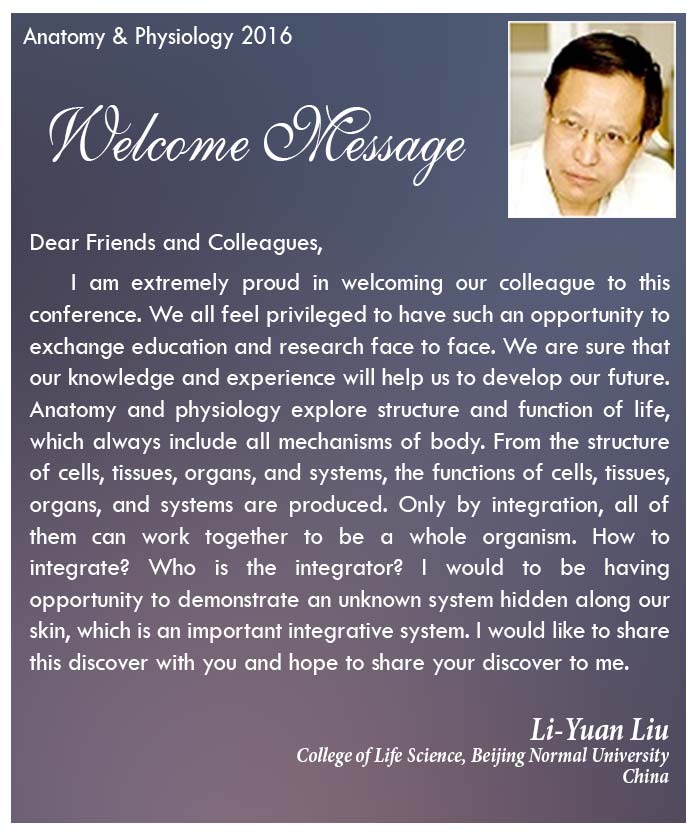
ConferenceSeries Ltd invites all the participants from all over the world to attend 'International Conference on Anatomy and Physiology' during August 11-13, 2016 in Birmingham, UK which includes Eminent Speakers, Researchers, Scientists, CEO’s , Young Research fellows across the world.
Anatomy and Physiology 2016 will bring together world-class scientists, biologists, super specialist, researchers and academicians to discuss about researches in anatomy and physiology. The main theme of the conference is Advancement in the teaching and research in the field of Human Anatomy and Physiology. The International symposiums, B2B meetings, international workshops will also be organized to discuss the specific topics in the field of Anatomy & Physiology. Anatomy and Physiology study is concerned with the structure and relationship between body parts and the function of body parts and the body. The conference also welcomes International exhibitions form corporate sectors to showcase the recent advancements in the Anatomy & Physiology. OMICS International organizes a conference series of 1000+ Global Events inclusive of 300+ Conferences, 500+ Upcoming and Previous Symposiums and Workshops in USA, Europe & Asia with support from 1000 more scientific societies and publishes 700+ Open access journals which contains over 30000 eminent personalities, reputed scientists as editorial board members.
Why to attend???
With members from around the world focused on learning about human anatomy and physiology and its advances; this is the best opportunity to reach the largest assemblage of participants from the human anatomy and physiology community. Conduct presentations, distribute information, meet with current and potential scientists, make a splash with new drug developments, and receive name recognition at this 3-day event. World-renowned speakers, the most recent techniques, developments, and the newest updates in anatomy and physiology are hallmarks of this conference.
Target Audience:
· Human anatomy and physiology Students, Scientists
· Human anatomy and physiology Researchers
· Human anatomy and physiology Faculty
· Medical Colleges
· Human anatomy and physiology Associations and Societies
· Business Entrepreneurs
· Training Institutes
· Manufacturing Medical Devices Companies
· Ergonomics related Companies
Summary: Anatomy and Physiology 2016 welcomes attendees, presenters, and exhibitors from all over the world to Birmingham, UK. We are delighted to invite you all to attend and register for the “International Conference on Anatomy and Physiology” which is going to be held during August 11-13, 2016 at Birmingham, UK. The organizing committee is gearing up for an exciting and informative conference program including plenary lectures, symposia, workshops on a variety of topics, poster presentations and various programs for participants from all over the world. We invite you to join us at the Anatomy and Physiology 2016, where you will be sure to have a meaningful experience with scholars from around the world. All the members of Anatomy and Physiology 2016 organizing committee look forward to meet you at Birmingham, UK.
For more details please visit- http://anatomy-physiology.conferenceseries.com
Importance and Scope: The scope of human anatomy and physiology is to inquire into fascinating complexity of human body. It gives a gateway to careers in health related fields viz. mass therapy and athletics training as a foundation to advanced scientific studies. More researches on anatomy and physiology is needed for understanding pathology of disease and pathological changes, for determining techniques of surgeries, to know parameters of normal health, factors affecting various physiological processes and its effects and moreover overall effective maintenance of individual and community health .The Principles of Anatomy and Physiology conference is to meet the existing requirements of introductory anatomy and Physiology courses. It also gives values, simplicity, direction and sort of power to the learners. Human Anatomy and Physiology is formidable body of knowledge to present in an introductory course and mastering subject. It is needed to understand how individual structures are related to the composition of entire body. The anatomy and physiology helps in the application of knowledge of structure of human body for prevention, diagnosis and prognosis of disorder.
Why Birmingham,UK?
Birmingham is a leading European business destination ranked highly by Mercer for its quality of life. Connected to millions through national, European and global links, it acts a vibrant, diverse and a catalyst for growth. Greater Birmingham is a global Centre of academic research excellence in low carbon and transport technologies with leading universities, colleges and science parks providing valuable expertise and technology transfer opportunities. Birmingham and the region provide broad and deep education and training opportunities. Pre-school to post-graduate the region can cater for your needs and aspirations. Birmingham's tech, bioscience and creative scene is thriving and building a solid reputation as one of the most exciting destinations in the country for research and higher studies program as well as industrial program also.
Conference Highlights:
• Human Anatomy and Ergonomics
• Organ science and Homeostasis
• Histology and Cytology
• Latest innovations in embryology research
• Biomechanics and Biomedical implants
• Experimental Physiology and Pathophysiology
• Physiological Psychology
• Exercise Physiology and Physiotherapy
• Human Immunity and Physiology
• Physiology of Respiratory system
• Various Biological systems
Association and Societies around the world
International societies and association
• International Behavioural Neuroscience Society
• International Behavioural and Neural Genetics Society
• International Council for Science
• International Association of Medical Colleges
• International Mammalian Genome Society
• International Union of Microbiological Societies
• International brain research organization
• International Society for Developmental Neuroscience
• International Society for Endocrinology
European
• European Brain and Behaviour Society
Argentina
• Argentine Medical Association
• Buenos Aires National Academy of Medicine
Australia
• Association of Australasian Palaeontologists
• Australian Academy of Science
• National Academies Forum
Brazil
• National Academy of Medicine
• Brazilian Academy of Sciences
• Brazilian Society of Physiology
• Brazilian Society of Health Informatics
• Brazilian Medical Association
Germany
• German Academy of Sciences at Berlin
• German Academy of Sciences Leopoldina
• Prussian Academy of Sciences
United Kingdom
• Anatomical Society
• Biochemical Society
• British Medical Association
• British Pharmacological Society
• Genetics Society
• The Institute of Ergonomics and Human Factors
• The Physiological Society
• Royal College of Paediatrics and Child Health
• Royal Society of Medicine
• Physiological Society
• Society for Endocrinology
United States
• American College of Medical Informatics
• American Society for Microbiology
• American Society for Neurochemistry
• American association of anatomist
• American physiological society
• Endocrine society
• Society for Neuroscience
• Society of General Physiologists
Hungary
• Hungarian Academy of Sciences
India
• Indian Academy of Sciences
• Indian National Science Academy
• The National Academy of Sciences, India
New Zealand
• Royal Society of New Zealand
Statistical Analysis of Associations and Societies

Statistics of number of members associated with anatomy and physiology association and society

Universities Associated with Anatomy and physiology Research in UK
• University of Cambridge, Cambridge
• University of Dundee, Dundee
• University of Oxford, Oxford
• University of East Anglia
• University College London, London
• University of Cardiff, Cardiff
• University of Bradford, Bradford
• University of Glasgow, Glasgow
• Newcastle University, Newcastle
• University of Huddersfield, Huddersfield, West Yorkshire,
• University of Aberdeen, Aberdeen
• University of Manchester, Manchester
• University of Birmingham, Birmingham
• University of King's College London, London
Universities Associated with Anatomy and physiology Research Globally
|
University name |
Location |
|
Harvard University |
United States Cambridge, Massachusetts |
|
Massachusetts Institute of Technology |
United States Cambridge, Massachusetts |
|
University of California--Berkeley |
United States Berkeley, California |
|
Stanford University |
United States Stanford, California |
|
University of California--San Francisco |
United States San Francisco, California |
|
University of California--San Diego |
United States La Jolla, California |
|
University of Cambridge |
United Kingdom Cambridge |
|
University of Oxford |
United Kingdom Oxford |
|
Johns Hopkins University |
United States Baltimore, Maryland |
|
University of Tokyo |
Japan Bunkyo-ku, Tokyo |
|
University of Toronto |
Canada Toronto, Ontario |
|
University of California--Los Angeles |
United States Los Angeles, California |
|
Yale University |
United States New Haven, Connecticut |
|
University of Washington |
United States Seattle, Washington |
|
University of Michigan |
United States Ann Arbor, Michigan |
|
Columbia University |
United States New York, New York |
|
University of Pennsylvania |
United States Philadelphia, Pennsylvania |
|
Cornell University |
United States Ithaca, New York |
|
University College London |
United Kingdom London |
|
Imperial College London |
United Kingdom London |
|
University of Copenhagen |
Denmark Copenhagen |
|
University of Wisconsin--Madison |
United States Madison, Wisconsin |
|
University of Chicago |
United States Chicago, Illinois |
|
Kyoto University |
Japan Sakyo-ku, Kyoto, Kyoto |
|
University of British Columbia |
Canada Vancouver, British Columbia |
|
California Institute of Technology |
United States Pasadena, California |
|
Washington University in St. Louis |
United States St. Louis, Missouri |
|
Karolinska Institute |
Sweden Stockholm |
|
University of Zurich |
Switzerland Zürich |
|
Duke University |
United States Durham, North Carolina |
|
University of California--Davis |
United States Davis, California |
|
University of Texas Southwestern Medical Center--Dallas |
United States Dallas, Texas |
|
University of Edinburgh |
United Kingdom Edinburgh, Scotland |
|
University of Illinois--Urbana-Champaign |
United States Champaign, Illinois |
|
University of Munich |
Germany Munich |
|
University of Minnesota--Twin Cities |
United States Minneapolis, Minnesota |
|
National University of Singapore |
Singapore |
|
Osaka University |
Japan Suita, Osaka |
|
University of Pittsburgh |
United States Pittsburgh, Pennsylvania |
|
University of Manchester |
United Kingdom Manchester |
|
McGill University |
Canada Montréal, Québec |
|
Baylor College of Medicine |
United States Houston, Texas |
|
University of Southern California |
United States Los Angeles, California |
|
University of North Carolina--Chapel Hill |
United States Chapel Hill, North Carolina |
|
Vanderbilt University |
United States Nashville, Tennessee |
|
University of Queensland Australia |
Australia Brisbane, Queensland |
|
Rutgers State University |
United States Piscataway Township, New Jersey |
|
Emory University |
United States Atlanta, Georgia |
|
New York University |
United States New York, New York |
|
Ruprecht Karl University of Heidelberg |
Germany Heidelberg |
|
Utrecht University |
Netherlands Utrecht |
|
Boston University |
United States Boston, Massachusetts |
|
Free University of Berlin |
Germany Berlin |
|
Pennsylvania State University |
United States University Park, Pennsylvania |
|
Seoul National University |
South Korea Seoul |
|
Ohio State University |
United States Columbus, Ohio |
|
University of Groningen |
Netherlands Groningen |
|
Northwestern University |
United States Evanston, Illinois |
|
Peking University |
China Beijing |
|
Université de Strasbourg |
France Strasbourg |
|
Pierre and Marie Curie University - Paris 6 |
France Paris |
|
University of Melbourne |
Australia Parkville, Victoria |
|
Humboldt University of Berlin |
Germany Berlin |
|
Universidad de São Paulo |
Brazil São Paulo |
|
University of Barcelona |
Spain Barcelona |
|
University of Helsinki |
Finland Helsinki |
|
Shanghai Jiao Tong University |
China Shanghai |
|
KU Leuven |
Belgium Leuven |
|
University of Dundee |
United Kingdom Dundee, Scotland |
|
Lund University |
Sweden Lund |
|
Uppsala University |
Sweden Uppsala |
|
University of Sydney |
Australia Sydney, New South Wales |
|
Texas A&M University--College Station |
United States College Station, Texas |
|
University of California--Irvine |
United States Irvine, California |
|
University of Hong Kong |
Hong Kong Pok Fu Lam, Hong Kong |
|
Aarhus University |
Denmark Aarhus C |
|
Fudan University |
China Shanghai |
|
Tsinghua University |
China Beijing |
|
University of Basel |
Switzerland Basel |
|
University of Florida |
United States Gainesville, Florida |
|
University of Massachusetts--Worcester |
United States Worcester, Massachusetts |
|
University of Alberta |
Canada Edmonton, Alberta |
|
Ghent University |
Belgium Gent |
|
Leiden University |
Netherlands Leiden |
|
Tufts University |
United States Medford, Massachusetts |
|
University of Utah |
United States Salt Lake City, Utah |
|
University of Virginia |
United States Charlottesville, Virginia |
|
Case Western Reserve University |
United States Cleveland, Ohio |
|
University of Geneva |
Switzerland Geneva |
|
University of Georgia |
United States Athens, Georgia |
|
Yeshiva University |
United States New York, New York |
|
Stockholm University |
Sweden Stockholm |
|
King's College London |
United Kingdom London |
|
Aix-Marseille Université |
France Marseille |
|
Charite - Medical University of Berlin |
Germany Berlin |
Statistical Analysis of Universities

Funding for the Conference

Target Audience:
Directors/Co-directors Medical Anatomist and physiologist, Surgical Anatomist and physiologist, Radiation Anatomist and physiologist, Surgeons, Gynaecologists, Pathologists, epidemiologists, Nurses, Medical staff & Medical Journalists, Vice Presidents/ Directors & Brand Manufacturers/ Marketers of medical instrumental Products. Professors, researchers and Students from Academia in the study of anatomy and physiology field.
Companies in Birmingham

Other Companies in UK related to Anatomy and Physiology

Companies In UK Related to Anatomy and Physiology medicines and surgery

Companies Located Worldwide

Statistics of companies located worldwide

Revenue Generated By Companies around the world

Growth of anatomy physiology market is mainly attributed by two major factors. First being the increasing use of artificial skeleton and medical kits by medical professionals for improving the quality of their services and second being reduction in operating costs of hospitals and related healthcare facilities in near future. The UK market for anatomy and physiology was estimated at $1.18 billion in 2009 which is forecasted to rise to $3.05 billion by the year 2015 at the compounded annual growth rate of 16.1% during the forecast period from 2010 to 2015.
Statistics of Physicians, Researchers and Academicians working on Anatomy and Physiology

Market Value on Anatomy and Physiology Research

Past 7 years report

Projections: Growth by next 5 -10 years

Since the scope of research on anatomy and physiology is increasing day by day, the scope of scientific meeting is also increasing by next 5-10 years the scope will increase by 25 percent of the current position.
Conference Highlights
- Human Anatomy and Ergonomics
- Organ science and Hematologic system
- Histology and Cytology
- Latest innovations in embryology and pregnancy research
- Biomechanics and Biomedical implants
- Experimental Physiology and Pathophysiology
- Physiological Psychology & Neuro-biology
- Exercise Physiology and Physiotherapy
- Human Immunity and Physiology
- Anatomy and Physiology of Otolaryngology
- Anatomy and Physiology of other various Biological systems
- The Skeleton & Bones
- Musculo Skeletal system
- Anatomy and Physiology of Heart and Lungs
- Energy Systems & Sports Physiology
- Integumentary system
- Anatomy and Physiology of Cancer
- Forensic Anatomy
- Dental: Anatomy and Physiology
- Anatomy and Physiology of Human eye
To share your views and research, please click here to register for the Conference.
To Collaborate Scientific Professionals around the World
| Conference Date | August 11-13, 2016 | ||
| Sponsors & Exhibitors |
|
||
| Speaker Opportunity Closed | Day 1 | Day 2 | Day 3 |
| Poster Opportunity Closed | Click Here to View | ||




